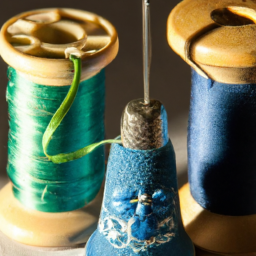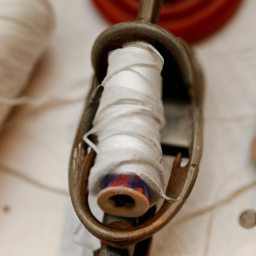
History of Sewing Patterns
Sewing patterns have played a significant role in the history of fashion and home sewing. For centuries, these templates have helped individuals create unique and custom-tailored garments. Let’s take a journey through time to explore the fascinating history of sewing patterns.
Ancient Beginnings
Although the idea of using a pattern to stitch clothing can be traced back to ancient times, the earliest surviving sewing patterns date back to the 15th century. During the Renaissance, tailors began creating templates known as “master patterns” or “slopers.” These were basic outlines used to modify and create garments for individual clients.

Industrial Revolution and Standardization
The Industrial Revolution in the 18th and 19th centuries brought significant changes to the manufacturing of clothing. As sewing machines became more common, the demand for standardized patterns increased. The emergence of large-scale sewing pattern companies, such as Butterick and McCall’s, revolutionized the way patterns were produced and distributed.
These companies began producing sewing patterns in multiple sizes and offered detailed instructions on how to use them. In addition to women’s clothing, sewing patterns began to encompass children’s wear, men’s attire, and even accessories.
Mid-20th Century Innovations
In the mid-20th century, sewing patterns reached the height of their popularity. Pattern companies like Simplicity and Vogue Patterns introduced new and trendy designs to cater to changing fashion styles. These patterns became increasingly complex, featuring intricate details and a wide range of sizes to accommodate various body shapes.

Modern Age and Digital Patterns
With the advent of the digital age, sewing patterns have made their way into the online world. Today, individuals can access a vast collection of downloadable patterns from independent designers and established brands. Digital patterns offer the convenience of instant access, printable templates, and the ability to easily resize or modify patterns to suit specific needs.
Furthermore, many sewing enthusiasts now share patterns and sewing tips through blogs, forums, and social media platforms. This online community has created a vibrant and inclusive space for sewists of all skill levels to connect, learn, and showcase their creations.
Conclusion
The history of sewing patterns showcases the evolution of the fashion industry and the democratization of clothing production. From the ancient master patterns to the digital age, sewing patterns have empowered individuals to express their creativity and create beautiful garments. As technology continues to advance, it will be fascinating to see how sewing patterns adapt to meet the needs of future sewists.




